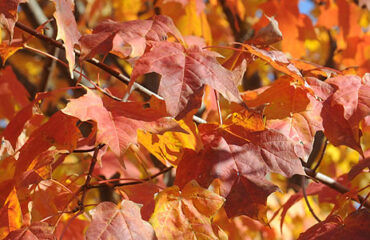If you’re like many you’ll find that your lawn might have some bare patches in it this spring…for one reason or another.
Let’s face it, it’s been a harsh winter…cold temperatures and lots of snow. And if your lawn was in “suspect” condition when you last saw it in the fall chances are it will not have improved during dormancy.
Which brings the question: If I want to seed this spring what’s the best kind of turf variety to use for immediate results and a quick, good-looking lawn?
“Quick” usually means something that is quick-germinating, and so the choice of many is a good perennial rye variety, and they’re easy to find. Just about every turf and landscape outlet sells them. And best, they will come up in 7 to 10 days in optimum conditions and “green up” more quickly than most of the bluegrass varieties.
But rye is suspect to drought conditions, however. It’s a “single” root plant, and chances are you will have to water during the summer if it turns unusually hot and dry.
Which brings us to a different option, that being one of the tradition Kentucky bluegrass types that features a rhizome root system that will regenerate itself more effectively if scuffed or damaged by dry weather. Bluegrass is a “warm weather” seed, however, and will take three times longer than rye to germinate and emerge, about 23 days. So for that reason many people prefer to plant bluegrass in the fall, as a dormant seeding.
Nonetheless, if you do plant bluegrass, or one of the “turf-type” fescues, allow for some warmer conditions later in the spring and then be sure and keep it moist and fed with a good starter fertilizer, which is important for any new seeding.
The “fescues” are the most durable of all the turf varieties, withstand drought more readily, and look nice when properly maintained…in fact, a lot like bluegrass if you keep it mowed at 31/2 inches.
These are your choices, and we’d recommend that you let weather dictate how you proceed and with which variety you seed. Remember, for short-term success, plant perennial rye. For more long-term satisfaction, you might consider bluegrass or turf-type fescues.




